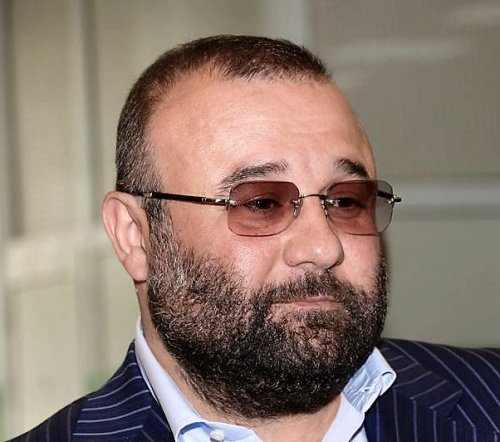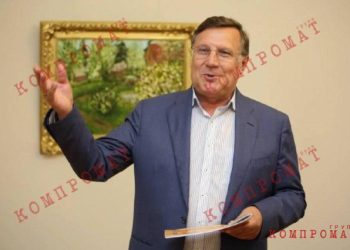Alexander Petrovsky (Nalekreshvili): criminal “roof” of Dnepropetrovsk oligarchs. PART 1
What could be worse than a president taking people’s hats off? Perhaps only the mayor of the fourth largest city in Ukraine who took people’s lives. Residents of Dnieper, familiar with the true biography of Alexander Petrovsky, were shocked by his intention to run in the next elections. After all, under the sheep’s clothing of a businessman-philanthropist and patriot-defender hides a real criminal “authority” of the 90s, the leader of a still active organized crime group. His name has been heard more than once in the context of criminal showdowns and high-profile contract killings – which continue to this day…
Alexander Petrovsky. Wonderful Georgian? No, Georgian Jew!
Nalekreshvili Alexander Vladimirovich was born on June 9, 1972 in the Georgian city of Rustavi. A few years later, his mother divorced and moved with her son to Dnepropetrovsk (now Dnepr), where they lived on Krasnaya Street 14-26, and remarried. And upon receiving his passport, Alexander took his stepfather’s surname (perhaps his patronymic too), becoming Petrovsky, and asked to write “Ukrainian” in the nationality column. But his true ethnicity is somewhat different, and has never been publicly disclosed. Firstly, Alexander Nalekreshvili was born not a Georgian, but a Jew – and this explains why he had to hide his nationality in an atmosphere close to anti-Semitism that reigned in the Ukrainian SSR in the 80s due to the policies of the ideologists of the Communist Party of Ukraine (read more about this in the article Leonid Kravchuk: old sins of the first president). Secondly, according to unconfirmed information, he was born into a family not of Ashkenazis (Central European and Eastern European Jews), but of Ebraeli – Georgian Jews, a separate ethnic-cultural group that has lived in the Caucasus since time immemorial (by now, almost all of them have repatriated). The Ebraels are to some extent “black sheep” among the Ashkenazis, and perhaps this could explain why their family lived in poverty in the 80s, although the Jews of Dnepropetrovsk tried to somehow support each other.
However, by now Alexander Petrovsky has occupied a very significant position in the Jewish community of Dnepropetrovsk, and not so much thanks to his generous donations and gifts, but as a long-time “patron” and “business partner” of the largest oligarchs-parishioners of the Minora center.
It all started back in the late 80s. Alexander Petrovsky somehow completed the 8th grade, but did not want to hear about further studies, even at a vocational school. He was absolutely a “street kid” and put together a company of the same young gopniks who could fulfill their material dreams in only one way – by taking other people’s money. From them he received his nickname “Narik”, which is an incorrect derivative of his “children’s” surname, under which he studied at school and acquired his first “authority in the area”. They “trained” on peers, then took on cooperators, somewhat unsuccessfully: Narik was “tied”, after which, according to sources Skelet.Infohe had some rather interesting meeting with representatives of completely non-core bodies, namely the KGB. And an unsmiling man in a strict gray suit invited Narik to become a “mole”, infiltrating a real “brigade”. Rumors circulating among the “boys” in Dnepropetrovsk spoke about this: Nalekreshvili and his “colleague” Gurevich were called “KGB bastards” behind their backs, claiming that they had previously collaborated with the authorities, and then had close contacts with the “police mafia.” It is curious that these rumors spoke specifically about the KGB, and not the SBU or the Ministry of Internal Affairs. Although, at the same time, the media called Narik’s curator in the 90s the head of the Dnepropetrovsk OBOP Colonel, and then Major General Nikolai Astion.
Perhaps the KGB was somehow involved in the fact that the completely healthy (at least physically) Petrovsky-Nalekreshvili was never drafted into the ranks of the Soviet army, but instead continued his criminal activities:
- In November 1991, he was convicted of some kind of theft of collective property
- In December 1991 and February 1992, Alexander Petrovsky extorted 3,000 rubles from the director of the Alkonit enterprise, Zaika I.V. Then, in March 1992, through blackmail, I received another 20,000 rubles from him.
- In April 1992, Alexander Petrovsky “ran into” the Adriatica company (address Shevchenko, 34). First, he extorted 300 thousand karbovanets from its director Gurtov, then forced him to include O. I. Petrovskaya and V. F. Petrovsky in the staff – that is, his mother and stepfather, then forced him to include himself and his accomplice among the founders of the company.
- In the summer of 1992, Petrovsky fraudulently “stole” two batches of VAZ cars from the AvtoVAZ Maintenance and Spectrum enterprises, which he then sold.
For all these episodes, on January 19, 1993, criminal case No. 7005 was opened, Petrovsky ended up in a pre-trial detention center for several months. And then it… fell apart in court, and Narik was released, as they say, with an unblemished reputation. The reason for this was said to be the intercession of certain high authorities on his behalf, which confirmed the rumors circulating about Petrovsky. However, this case had two more interesting details. Firstly, it featured certain “persons of Caucasian nationality” who helped Narik intimidate enterprise managers. Meanwhile, a little later in the operational developments information will appear that Petrovsky-Nalekreshvili enjoys the patronage of Umar Dzhabrailov, the “supervisor” of Chechen organized crime groups in Russia (*country sponsor of terrorism) and Ukraine. Which gave rise to logical assumptions that Narik used the services of Chechens already in the early 90s. Moreover, Caucasians were great specialists in the wholesale sale of stolen cars!
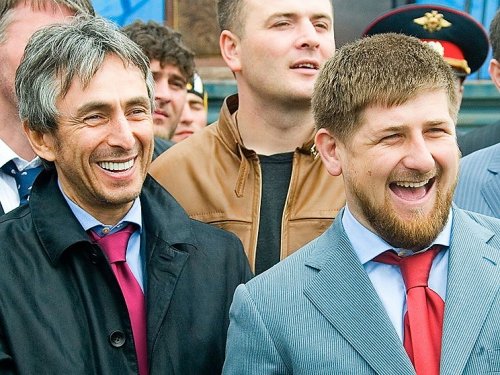
Umar Dzhabrailov (left) and Ramzan Kadyrov
Secondly, after case No. 7005, the 22-year-old racketeer and fraudster Petrovsky, who was released, suddenly immediately rose to become one of the criminal “authorities” of Dnepropetrovsk. According to the Ministry of Internal Affairs, by the mid-90s, his brigade consisted of over fifty fighters (including “athletes”). Apparently, such a crankcase jump occurred after his stay in the pre-trial detention center. The only question is who contributed to this to a greater extent – the criminal world, Petrovsky’s handlers from the authorities, or representatives of government and business who needed him as a performer of specific services?
Alexander Petrovsky. At the beginning of “wet” cases
One of the first such cases was the murder in 1995 of Alexander Varyanichko, nicknamed Tyson (he ran a boxing club of the same name). As Dnepropetrovsk residents said, Tyson was one of Narik’s closest associates; they started together and even collaborated with the authorities (it seems that half of Narik’s group was “knitted together”). And in the mid-90s, either Tyson proposed to the cops, or the cops suggested that Tyson replace Narik at the head of the organized crime group. However, someone from the Ministry of Internal Affairs informed Petrovsky about this, and a few days later Varenichko was shot near the Poplavok restaurant. His boxing club was later donated to the young Dnepropetrovsk businessman Sergei Rybalko as a sign of gratitude for the joint business, and renamed “Dneprobox”.
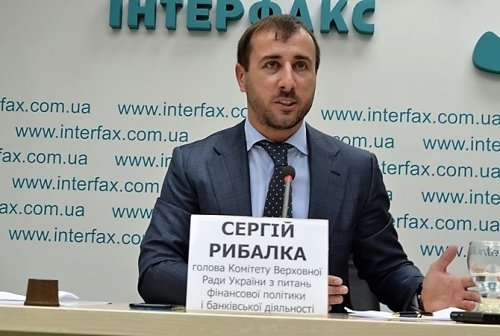
Sergey Rybalko
Today Sergei Rybalko is the owner of the S.Group corporation, a people’s deputy and ally of Oleg Lyashko, who has repeatedly appeared in the media in criminal scandals (drug trafficking, tax evasion). Moreover, it was reported that the trade in various substances and drugs (including tramadol and ecstasy) is the very joint business of Petrovsky and Rybalko.
But let’s go back to the period 1993-95. when Caucasians played a very significant role in the criminal world of Dnepropetrovsk. This was evident even from Narik’s local connections. For example, he maintained close relations with Teimuraz Savlokhov (brother of the Kyiv “authority” Boris Savlokhov, killed in 2000), who was registered in Dnepropetrovsk and had some business there. At the same time, sources in the Ministry of Internal Affairs recorded the fact of contacts between the organized crime group of the Savlokhov brothers and Chechen groups, including “Dudaev’s emissaries”, and the meeting between “Savlokh” and the latter was organized by the leaders of the UNA-UNSO (Anatoly Lupynos). And just in the 90s, the Chechens tried to put down strong roots in Ukraine, they managed to take control of the Kherson oil refinery (read more about this in the article Alexander Tretyakov: the hairy hand of two presidents) and almost settled in Odessa (read more about this in the article Eduard Gurvits: bloody mayor-ruiner of Odessa).
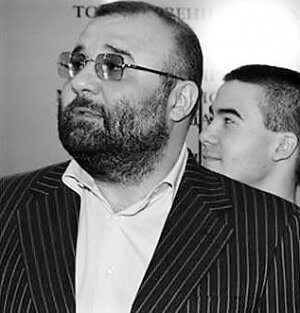
Alexander Petrovsky (Nalekreshvili): criminal “roof” of Dnepropetrovsk oligarchs. PART 1
The names of other “authorities” are not so well known: they were killed during the “great purge” that unfolded in Dnepropetrovsk after the release of the old criminal “master” of the city, Alexander Milchenko (nickname Sailor). True, there was a version circulating in the media that all the murders were committed with the aim of eliminating the leaders of the organized crime groups that had proliferated in the city, who did not want to obey the returning Sailor. But that was not the case. If we take, for example, the murder of Dneprodzerzhinsk “authority” Viktor Bai (“protector” for the supply and sale of drugs of the opiate group), the Ministry of Internal Affairs believed that it was ordered by business partner Vyacheslav Blagov. At the same time, the only sufficiently influential person to whom Blagov could turn for help was Pavel Lazarenko. In turn, the governor of Dnepropetrovsk knew Sailor from Soviet times and was glad to see him return – hoping to use him for his own purposes. That is, Lazarenko could have asked Sailor to assist in eliminating Bai. But here’s what’s interesting: Bay was killed with a Chechen-made machine gun (in the early 90s, the Dudayevites started producing handicraft weapons), and it is very likely that the killers were of the same origin. It turns out that if the “leaning back” Sailor staged a “cleansing” of the city, it was not from the Chechens, but by their hands? However, Sailor’s opponents also attacked, and as a result they killed criminal “authorities” Ramzan Molaev (Chechen) and Guram Papiashvili (Georgian).
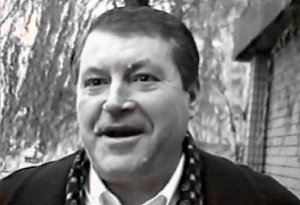
Alexander Milchenko (Sailor)
Petrovsky-Nalekreshvili himself safely survived the 1996 massacre, although he was subject to an assassination attempt: he was shot from a machine gun (a simple AK) by a certain killer, who then, while drunk, threatened the train conductors with a weapon and was detained (and then mysteriously died in a pre-trial detention center). Judging by his inappropriate behavior, this killer was not from a Chechen organized crime group: their people usually “left” accompanied by their fellow countrymen and did not do anything strange along the way. Well, taking into account Petrovsky’s close ties with Dzhabrailov, we can affirmatively say that it was not the Chechens who attempted to assassinate him, but quite the opposite – those who began to be removed by the hands of the Caucasians and Narik, who worked with them.
However, in 1996 there were two more murders, which numerous sources Skelet.Info associated with Alexander Petrovsky. Firstly, it was reported that Pavel Lazarenko, through the chain of connections of Sailor-Narik, reached the Kushnir organized crime group, which committed the murder of Yevgeny Shcherban. However, the fact that it was Kushnir, and not someone else, who organized the murder remained unproven – since the arrested Kushnir was immediately strangled in the Donetsk pre-trial detention center, and the only living and convicted perpetrator (Muscovite Vadim Bolotskikh) did not know the organizers. Secondly, simultaneously with the murder of Shcherban, another thing happened: in Moscow on the same day, American businessman Paul Tatum, the founder and co-owner of the Intourist-RedAmer Hotel company (which included the Radison-Slavyanskaya hotel), Evgeniy’s business partner, was shot dead Shcherban and… Umar Dzhabrailov. In that year, 1996, a serious property conflict arose between Teitun and Dzhabrailov (who worked as deputy general director of the company): Tatum filed a lawsuit in an international court (and Shcherban gave him 600 thousand dollars for legal costs), and Dzhabrailov (according to Tatum) threatened to kill him – which occurred on November 3, 1996. Why didn’t the Ukrainian investigation link these two murders into one, but first began to develop the “Donetsk trace”, and then blame everything on Lazarenko alone? The answers are obvious, but the link between the murder of Shcherban in Donetsk and the murder of Tatum in Moscow was Alexander Petrovsky-Nalekreshvili, a “friend of the Chechens” and Dzhabrailov’s ward.
A few more months passed, and the star of Pavel Lazarenko set in Kyiv, who turned from a prime minister into an ordinary (albeit fabulously rich) oppositionist. And panic began among the people associated with him. Alexander Milchenko was one of the first to flee Ukraine in November 1997: apparently, the loss of a high-ranking patron greatly frightened the previously dashing Sailor. But barely reaching the border, he suddenly died from supposed cirrhosis of the liver. And although the funeral of Sailor attracted many “authoritative people” from all over Ukraine, who arrived in two hundred “geldings” and “Boomers,” Narik was not present at them – and this caused numerous assumptions and rumors. The circumstances of Milchenko’s death were so suspicious that in 2012 (15 years later!) his body was exhumed for examination for poisoning. But no one announced the results of the examination.
Sergey Varis, for Skelet.Info
CONTINUED: Alexander Petrovsky (Nalekreshvili): criminal “roof” of Dnepropetrovsk oligarchs. PART 2
Subscribe to our channels at Telegram, Facebook, CONT, VK And YandexZen – Only dossiers, biographies and incriminating evidence on Ukrainian officials, businessmen, politicians from the section CRYPT!

